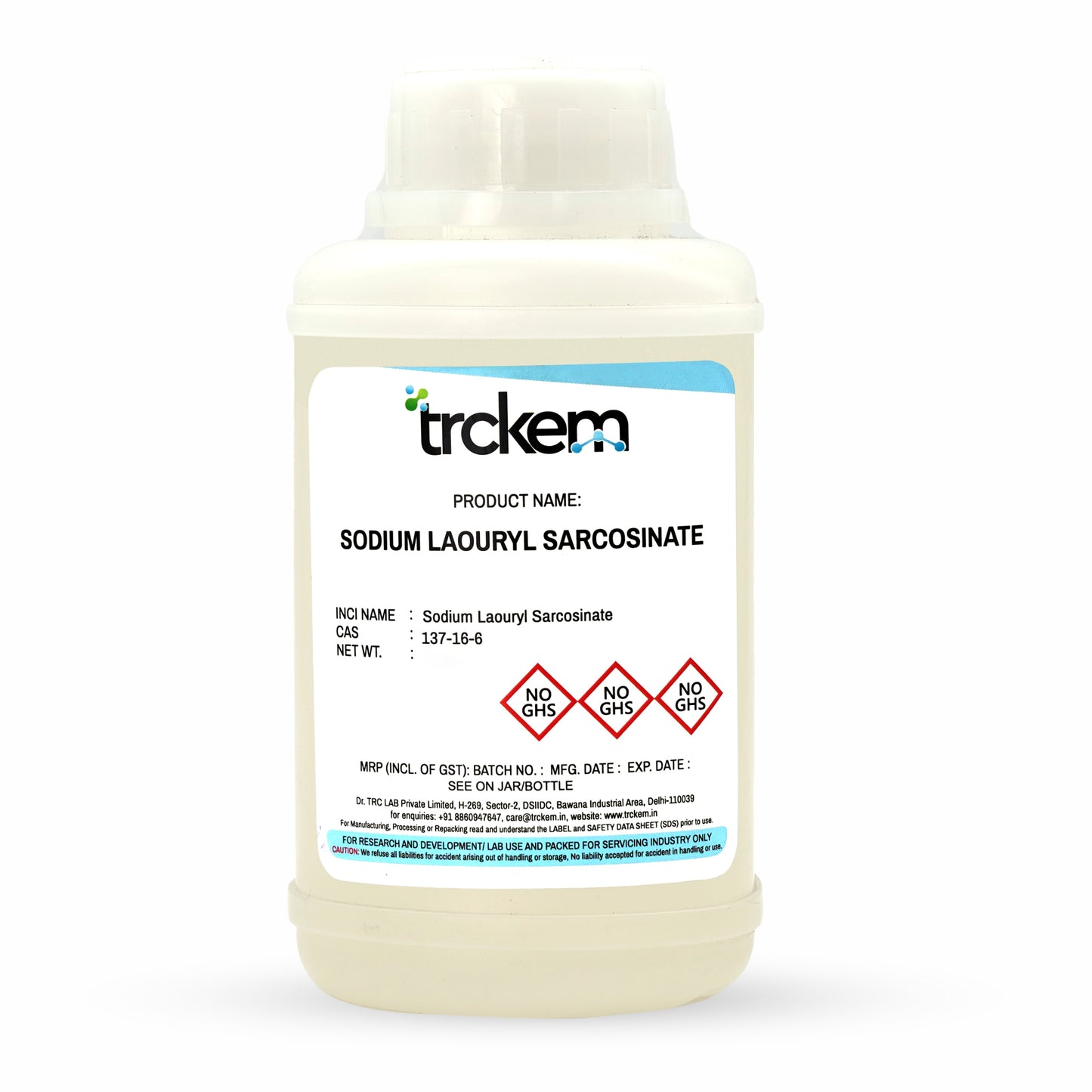
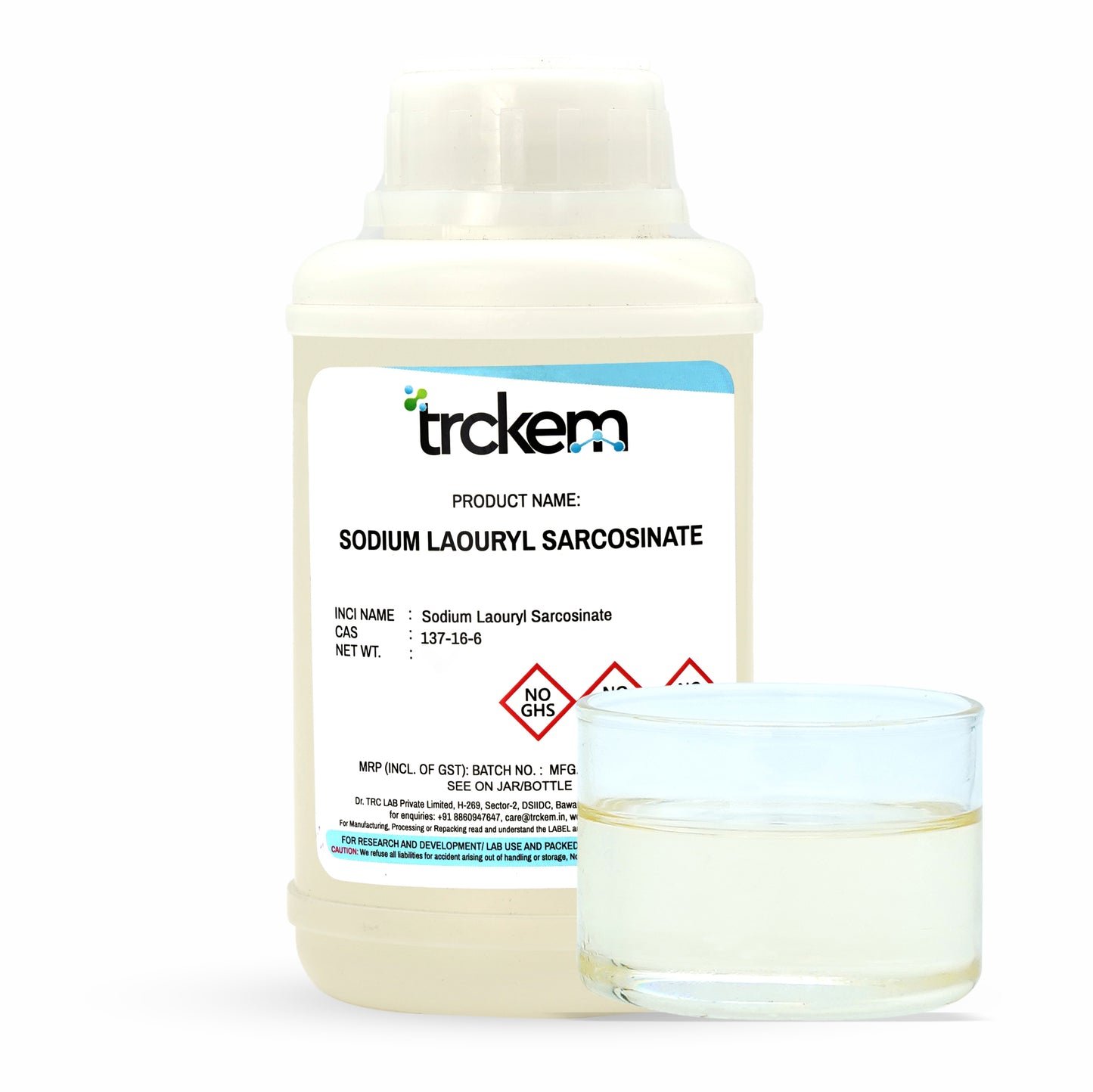
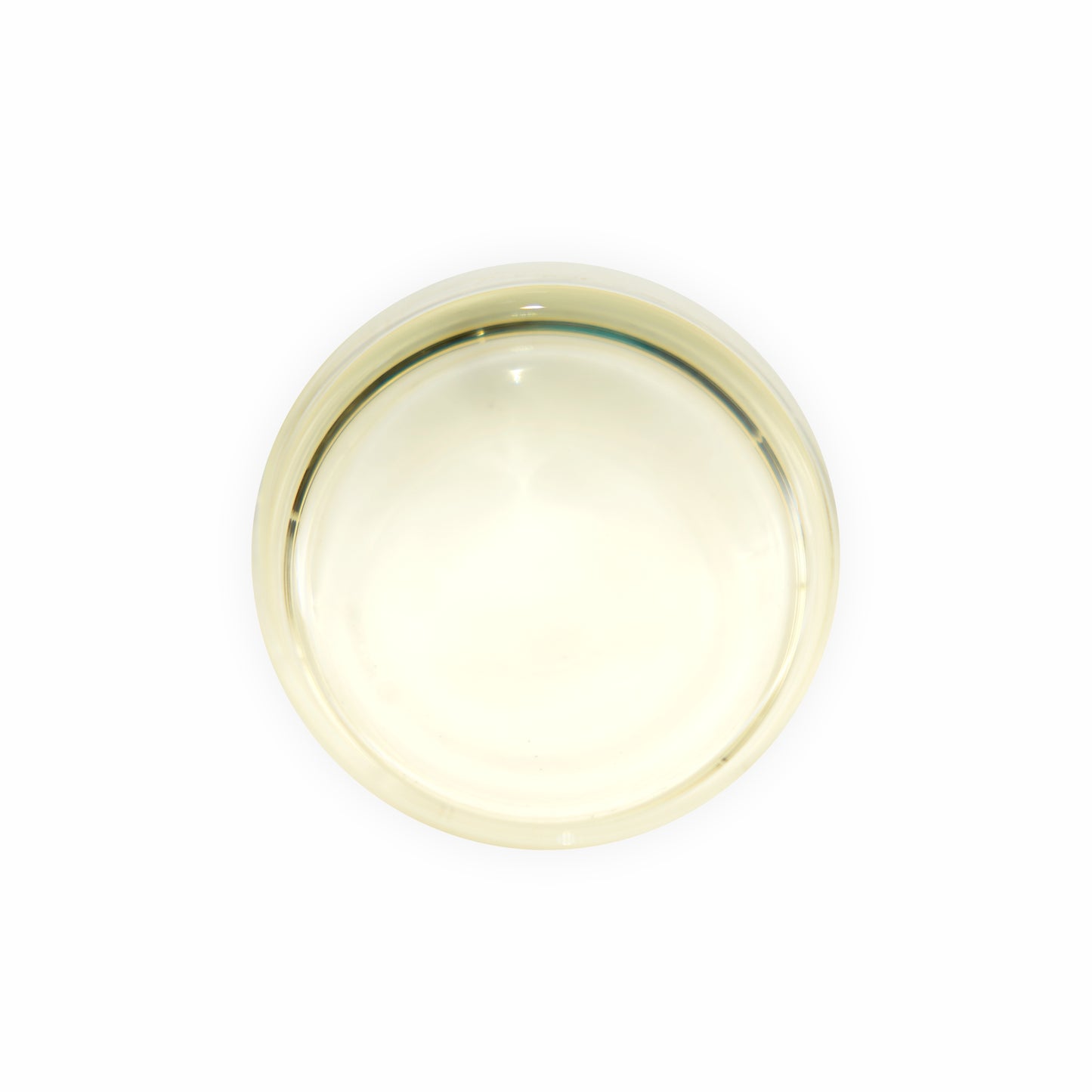
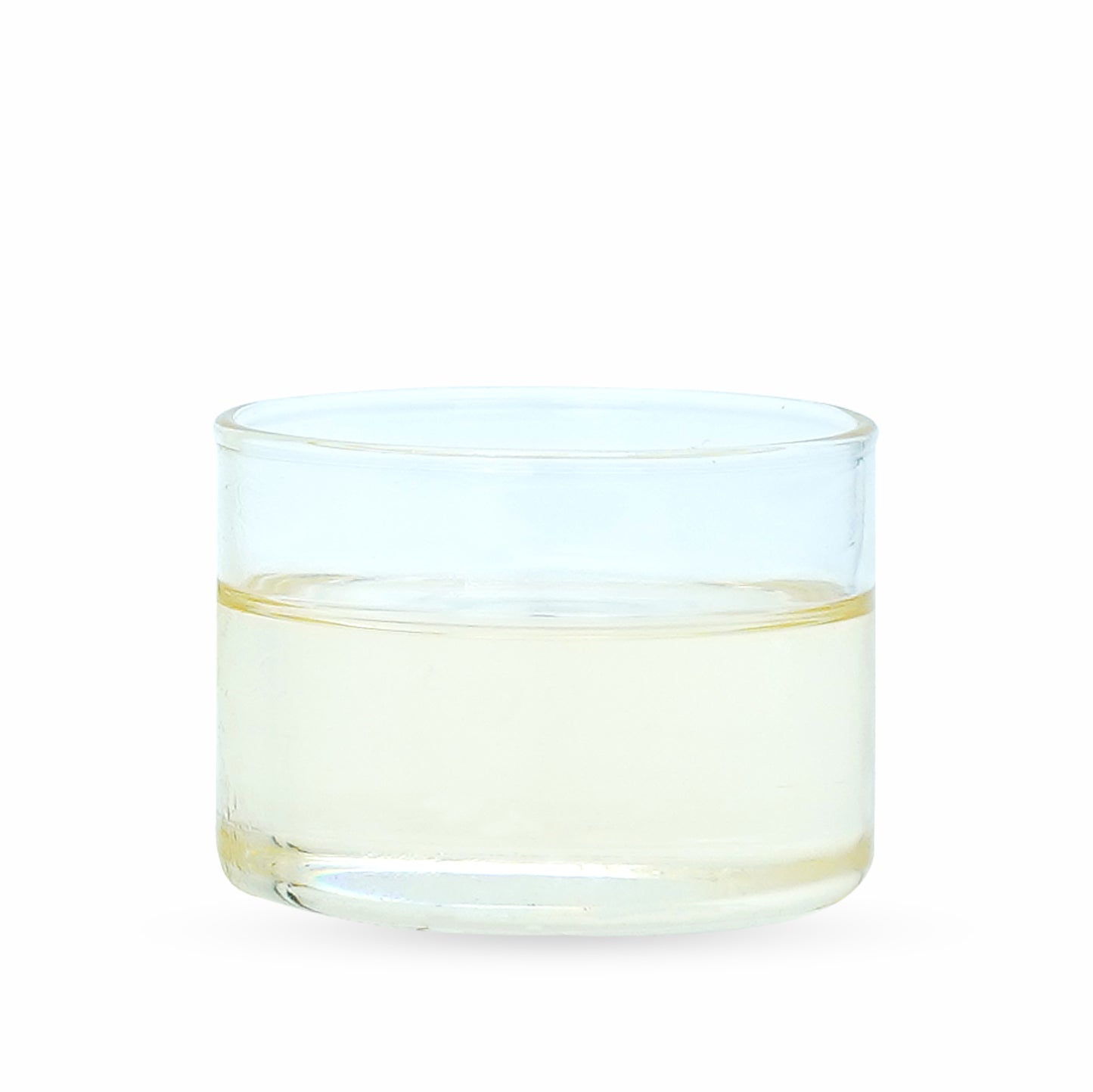
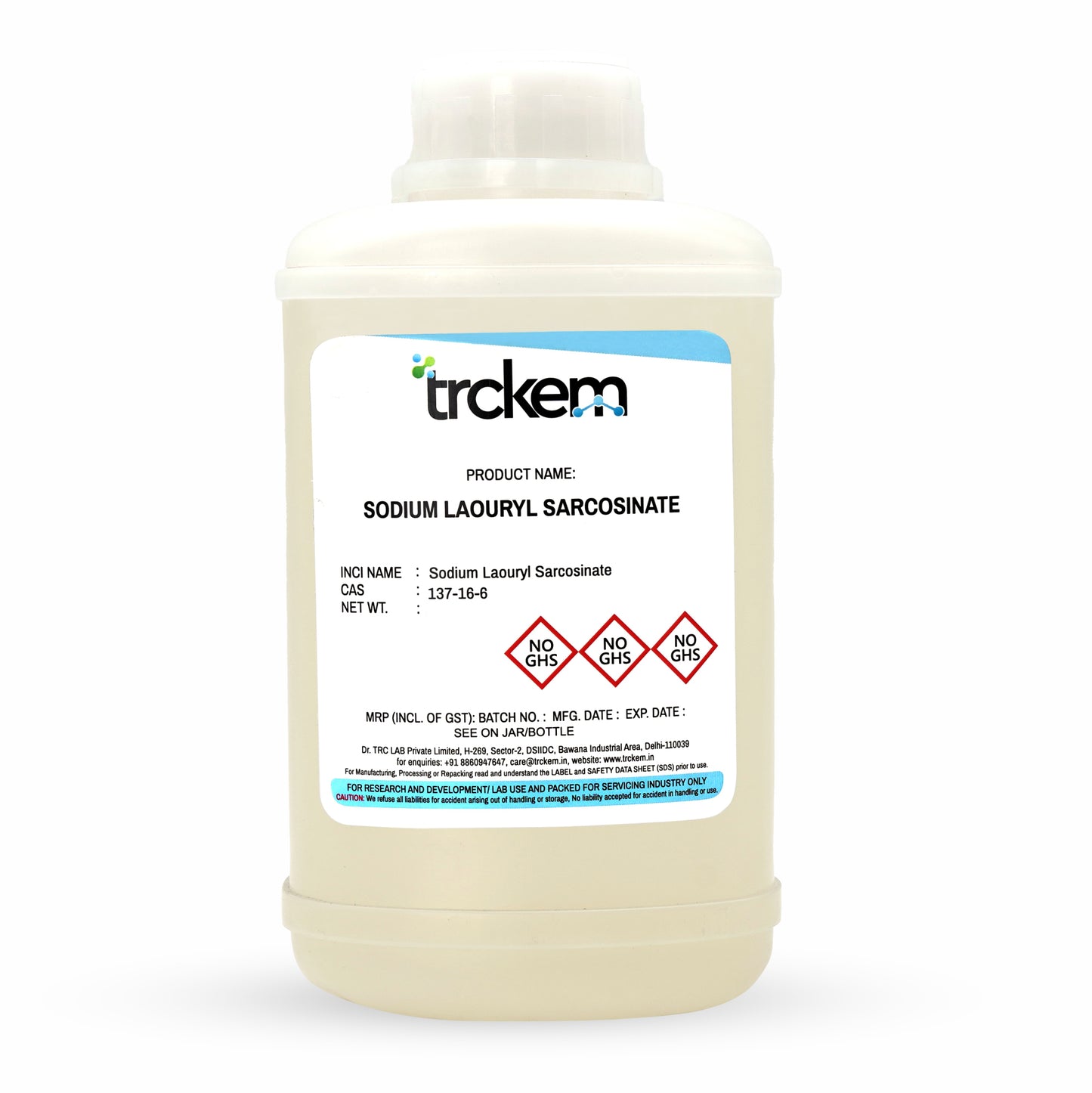
Formulator’s Queries, We Answered
1. What is Sodium Lauroyl Sarcosinate?
Sodium Lauroyl Sarcosinate is an anionic surfactant derived from sarcosine, a natural amino acid. It is commonly used in personal care products for its mild cleansing and foaming properties.
2. What is the CAS Number and INCI Name of Sodium Lauroyl Sarcosinate?
CAS Number: 137-16-6
INCI Name: Sodium Lauroyl Sarcosinate
3. What are the benefits of using Sodium Lauroyl Sarcosinate in personal care products?
Gentle Cleansing: Effectively removes impurities without stripping natural oils.
Rich Foam Formation: Produces a stable, creamy lather suitable for shampoos and facial cleansers.
Mildness: Non-irritating and safe for sensitive skin, scalp, and baby care formulations.
Conditioning Effect: Enhances softness and manageability in hair care applications.
Biodegradability: Environmentally friendly and derived from renewable sources.
Compatibility: Works well with other surfactants and cosmetic ingredients.
4. What are the common applications of Sodium Lauroyl Sarcosinate in personal care?
Shampoos and Hair Cleansers: For gentle yet effective cleansing with a rich foam.
Facial Cleansers and Body Washes: Ideal for mild, sulfate-free cleansing formulas.
Toothpastes: Provides foam and cleaning action without irritation.
Shaving Foams and Creams: Offers smooth glide and creamy texture.
Baby Care Products: Safe for delicate skin and sensitive scalp formulations.







